From fugu to ikan buntal: Pufferfish has long roots in culture
It’s a potentially lethal fish which can only be served by accredited experts and sources, but it holds a special place in the cultures of Japan and Singapore’s Orang Laut community.
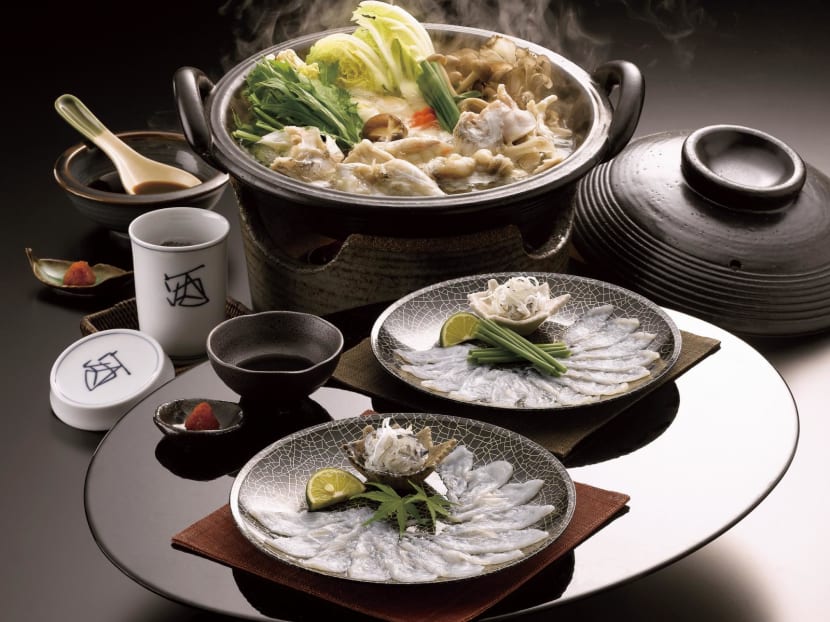
Fugu or pufferfish stew and sashimi. (Photo: iStock/Gyro)
James Bond had a close call with pufferfish in the 1957 novel From Russia With Love. Captain James Cook, too, had an unpleasant experience after eating its roe and liver, experiencing a prickling sensation that only subsided with “a vomit and sweat”, according to Tom Parker Bowles’ The Year Of Eating Dangerously. Legendary Japanese kabuki actor Bando Mitsugoro VIII famously perished after downing four servings of it in 1975.
More recently, an incident in Malaysia in April resulted in the unfortunate deaths of an elderly couple who consumed it, which led to calls for more awareness regarding its risks and how it’s sold.
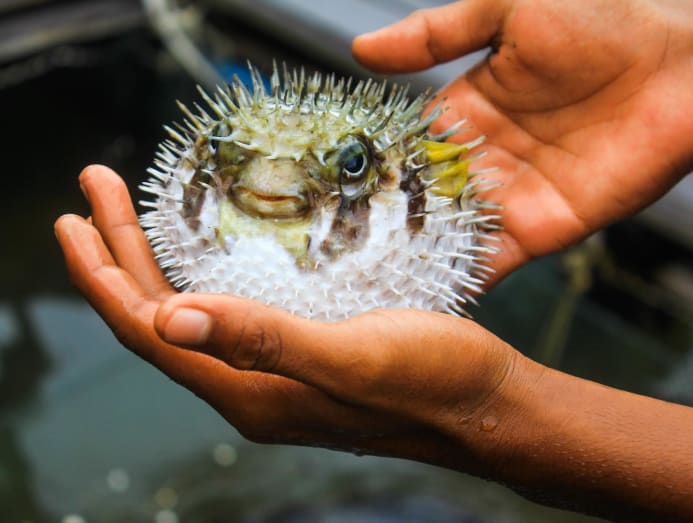
DEADLY REPUTATION
The pufferfish’s notorious and sometimes deadly reputation precedes it. It’s down to a potent neurotoxin called tetrodotoxin (TTX), which is produced by the small crustaceans it’s fond of consuming. TTX is estimated to be up to 1,200 times more poisonous than cyanide – and a mere 2 milligrams of it can disrupt nerve impulses, leading to nausea, paralysis and cardiac arrest.
So it’s no surprise that the sale of pufferfish is strictly controlled or outright banned in some countries.
In Singapore, for instance, restaurants can only buy farmed ones (meaning it’s got no chance of eating its deadly TTX-carrying prey) and only through proper channels.
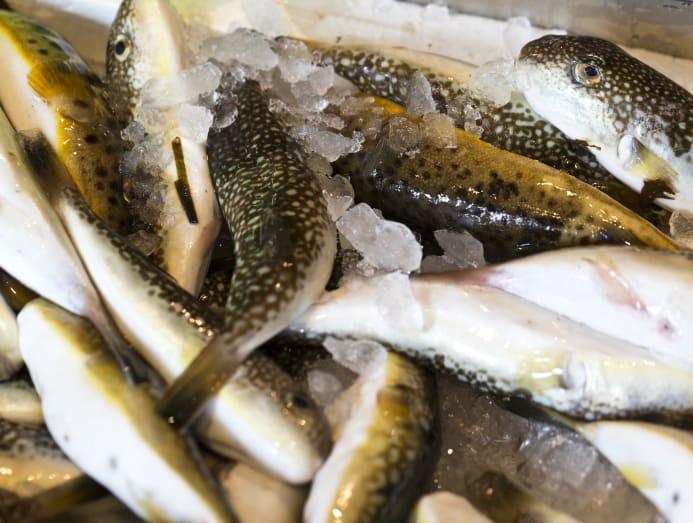
The Singapore Food Agency (SFA) strictly regulates its import. Only the TTX-free muscles, fins, skin and milt of farmed pufferfish, and the prepared muscle of wild pufferfish are permitted. Additionally, all imported pufferfish must be prepared by SFA-accredited establishments certified and licensed by the Japanese government.
A health certificate from Japanese authorities, detailing where the fish was sourced and prepared, must also be provided.
The SFA also reminds the public never to consume pufferfish caught in the wild and prepared by amateurs.
FINE DINING IN JAPAN
Despite the strict rules regarding its consumption – or precisely because of that – it continues to be a source of culinary fascination for many, and a huge part of their history and culture for others.
No other country is associated with pufferfish more than Japan, which is the largest consumer of fugu, as it’s called there, in the world.
For over 2,000 years, eating it has been a daredevil pursuit entrusted to the hands of specially trained chefs, who complete two years of specialised training before they are tested on their ability to identify different pufferfish species and accurately determine the TTX levels in each. Only after demonstrating their proficiency in properly gutting the fish are they deemed ready to prepare fugu for consumption.
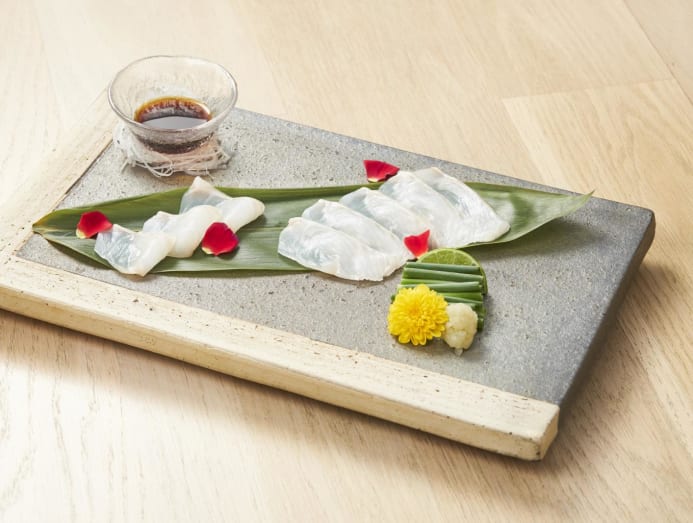
“Fugu is an element of fine dining in Japanese dining traditions. Eating pufferfish, which is very expensive for Japanese people, gives you a sense of happiness. Personally, I enjoy fugu as well as I find it very delicious,” said Kenta Yamauchi, chef-owner of Hazuki, an upscale Japanese restaurant in Singapore which sources its farmed fugu from the Yamaguchi, Oita and Fukuoka prefectures.
According to him, fugu season is from November to February, with its soft roe (shirako) becoming fattier and more delicious at the start of the year.
Upmarket Japanese restaurants like Hazuki typically present gossamer slivers of fugu sashimi (that is, done the usuzukuri way) fanned out on a plate to resemble a chrysanthemum flower, a flex of the chef’s slicing skills. Another way would be as a hot pot, as the fish bones lend themselves to a tasty broth.
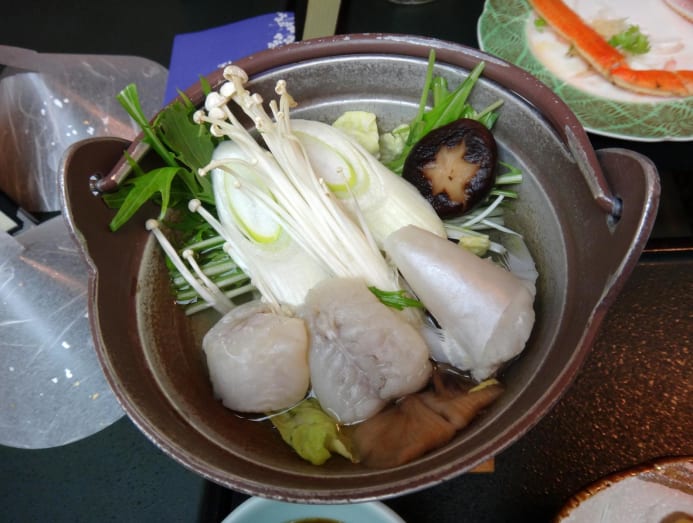
Despite its long history of consuming pufferfish and preparation by expert chefs, the country has not been immune to its dangers. In 1948, Japan’s prefectures began requiring licenses for those who serve fugu, leading to a decline in annual fugu poisonings. The banning of fugu kimo (the liver) in 1983 resulted in even fewer incidents.
GOOD FAITH AND FOLKTALES
And while we automatically associate pufferfish with Japan, it’s not the only place where it’s considered a delicacy.
In Singapore, it was a treat among the Malay and Orang Laut (Malay for “people of the sea”) community who, like the Japanese, relied on the sea as a source of sustenance in the days of old.
“Our people have always had a tacit understanding of how to treat the bounty from the sea,” explained Khir Johari, author of The Food Of Singapore Malays, a landmark book that chronicles the history, geography and cultural beliefs that have shaped Malay gastronomy.
“It’s fascinating that our ancestors somehow figured out how to clean ikan buntal (Malay for pufferfish). Many people in the village, not just the elders, but also housewives trained by their mothers, knew how to handle it.”
According to Khir, pufferfish were typically cleaned on the boat by those who’d fished it. “They would remove the innards… most importantly, the ovaries and the liver. If any of that breaks during the cleaning, they would throw the fish back into the sea. The part near the ventral fin had to be removed. If you could not find those fins, you couldn’t bring it home because that would mean that the poison would be all over the fish (making it unsafe to eat).”
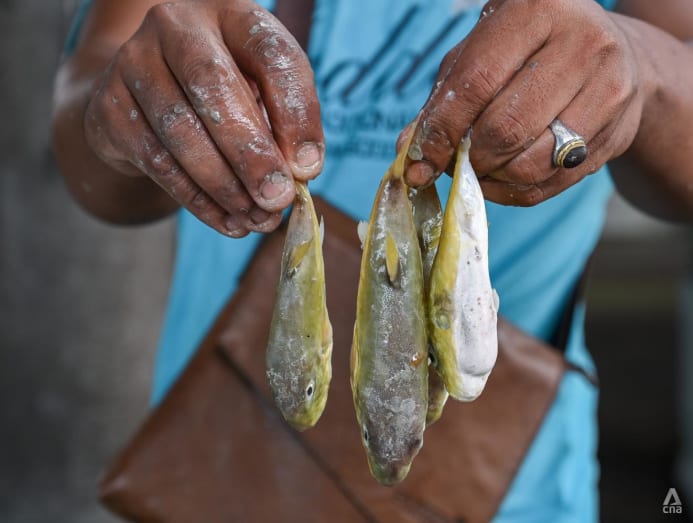
Firdaus Sani, a fourth-generation Orang Laut from Pulau Semakau and founder of Orang Laut SG, said his community elders would take six to eight hours to clean the fish, after which, it was “double-boiled with the innards tied into a little braid so they don’t break.”
Preparing it was a “community effort. A medium-sized fish (weighing between 5kg and 6kg) could feed about 25 people.”
“PANTANG LARANG”
Like other traditional delicacies such as buah keluak and durian, the consumption of pufferfish in Singapore’s coastal communities of the past comes with some pantang larang (superstitions or taboos).
“For instance, you cannot consume coffee when you eat pufferfish,” said Firdaus. “It will cause you to feel mabuk (a sense of disembodiment, like dizziness). Another taboo is eating fruit with sap, like mangosteens... The belief is it has some properties that don’t go well with it."
Whether or not these taboos hold any water is anyone’s guess and the community is not about to contradict these time-honoured diktats.
“These folklore are important and we don’t go against it because they are the words of the orang lama, individuals who have tried and tested them,” Firdaus said.
Meanwhile, Khir told of another folklore shared by Malay elders: “If, when boiling the fish, the water gets dark and murky, it means the poison has gone into the flesh. So you cannot eat it,” he said.
While both Malay and Orang Laut cultures parlay the fish to a dish called kerabu buntal (loosely translated to mean pufferfish salad), their versions differ from one another.
For one, the Orang Laut version includes the potentially poisonous liver. “The liver becomes a rich base along with chillies, lemongrass and kangkong (water spinach),” explained Firdaus. The pounded base is cooked down with the pufferfish meat to a thickish sambal.
“While the texture of the meat – somewhat like that of Patagonian toothfish – is great, you need spices like red chillies, ginger, garlic, and lots of black pepper and lemongrass to bring out the lemak-ness (richness) of the fish,” said Khir. “We cook it down till the entire mix reduces so that it’s quite dry, hence the name kerabu buntal.”
FEWER FUGU CHEFS
With strict rules regarding its consumption in place, both in Japan and Singapore, the art of preparing pufferfish is slowly becoming one that’s limited to a few.
According to Firdaus, the number of individuals skilled at preparing pufferfish in the Orang Laut community has dwindled since fishing requires “the luxury of time” in modern Singapore. And even in Japan, Yamauchi reckoned that the rise of farmed fugu and an increasing number of Japanese fishmongers skilled at preparing fugu have led to fewer qualified fugu chefs.
Nevertheless, the fascination with pufferfish remains intact for now – whether served as a seasonal delicacy during the winter months at Japanese restaurants or even as part of yusheng during Chinese New Year. And for anyone mulling the prospect, it pays to fall back on the adage that when in doubt, sit it out.
Read this story in Bahasa Indonesia here.
Read this story in Bahasa Melayu here.






